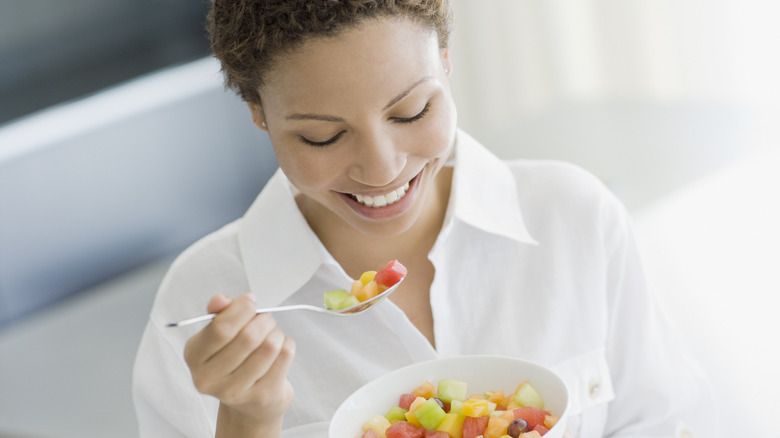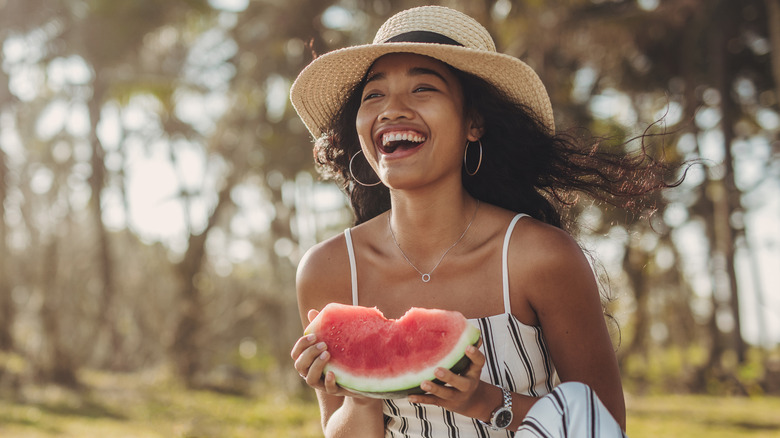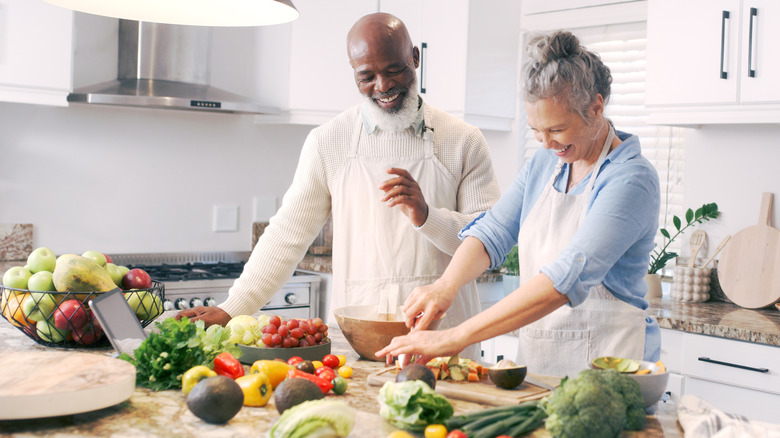Eat This Popular Fruit To Help Prevent Kidney Stones
Kidney stones are more common than you think; Yale Medicine says 1 out of every 10 people will develop a kidney stone at some point in their lives. Kidney stones are also on the rise, and a 2014 article in Urology says that dietary changes over the past 40 years, including an increase in daily calories, can be partially responsible for the increase in the prevalence of kidney stones.
Foods high in oxalate such as peanuts, chocolate, and sweet potatoes can cause calcium oxalate kidney stones (the most common type of kidney stone). Also, foods high in purines like red meat, organ meat, and shellfish can cause acidic urine leading to uric acid kidney stones.
The National Kidney Foundation says drinking water is your best prevention against kidney stones, especially if you sweat a lot. Cutting back on high-sodium foods and animal-based protein could also keep calcium oxalate and uric acid kidney stones at bay. Eating more fruits and vegetables can also make your urine less acidic, and choosing hydrating fruits like watermelon can be a good choice for preventing kidney stones.
Watermelon is hydrating
Your hydration requirements might vary according to how much you sweat and how hot your environment is, but the National Kidney Foundation recommends drinking at least 2.5 liters (84 ounces) of water a day to prevent your urine from becoming too concentrated. You should also avoid grapefruit juice, sweetened iced tea, and soda. Remember that raw fruits and vegetables can also contribute to your hydration needs if they're at least 80% water. Sometimes these foods can better aid hydration because they also have electrolytes to keep your body's fluids in balance. A cup of diced watermelon can help you meet your daily hydration needs because it's almost 92% water.
Watermelon's health benefits also include providing you with 14% of your daily recommended amount of vitamin C to help your body absorb iron and make collagen. Even though watermelon's 12 grams of carbs and 9 grams of sugar make it score high on the glycemic index at a value of 80, it scores just a 5 on its glycemic load. That means it has less of an impact on your blood sugar.
Other considerations with kidney stones
Although calcium oxalate kidney stones are the most common, that doesn't mean you should give up foods rich in calcium like milk or yogurt. It's actually the opposite. You should increase the amount of calcium in your diet while also cutting back on the excess sodium. You also don't have to give up high-oxalate foods like chocolate. Instead, a little planning will help prevent the formation of these calcium oxalate stones. If you're craving chocolate or other high-oxalate foods, pair them with calcium-rich foods. That way the calcium and oxalate combine in your digestive system before they hit your kidneys.
Kidney stones can often go unnoticed or be mistaken for other conditions such as a urinary tract infection, stomach flu, or appendicitis. Rather than noticing your lower back pain is a sign of a kidney stone, you might think your pain could be from lifting too hard at the gym or helping your friend move. Sometimes you might not know you have a kidney stone until the stone moves further into your urinary system and interferes with urine flow. That could make you feel intermittent pain in your belly or near your reproductive organs.



